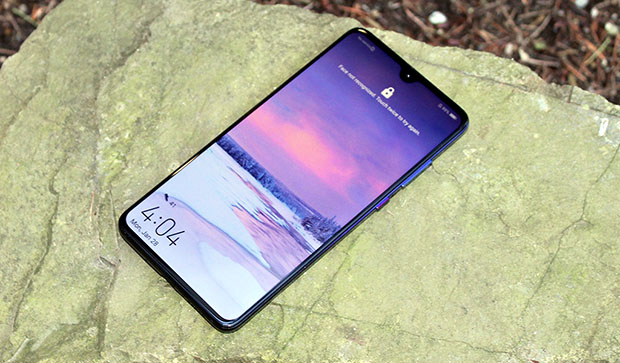Huawei Mate 20 Review: Camera Chops And Great Battery Life
Huawei Mate 20: Display, Design, And Build Quality
The front of the Huawei Mate 20 is almost all display. There's just a tiny tear-drop notch at the top and slim bezels all around. As we mentioned on the previous page, you're getting an 88% screen to bezel ratio here, which is pretty impressive when you first set your eyes on it. The larger screen area makes gaming and watching movies more immersive and just plain looks bold. Since this isn't the flagship model though, it doesn't have an OLED display (that's reserved for the Mate 20 Pro), but you still get an IPS panel with 381 PPI. It may not quite keep up with other Android flagships like the Google Pixel 3, but this display is still plenty bright and still looks fantastic.
In fact, the Mate 20 Pro's display is still DCI-P3 compliant with excellent saturation, contrast and pop, while its 2244x1080 resolution didn't leave us for want of additional pixel density either.
The back side of the phone houses the triple camera array along with the rear-mounted fingerprint reader. The camera at first glance looks like there could be four cameras, but the upper right side is actually the LED flash module. Just under the cameras is the fingerprint reader. While having an in-display reader (like the Mate 20 Pro) is nice, the location and accuracy of the fingerprint scanner on the Mate 20 was top notch.
The model we were sent sports Huawei's Twilight color, which to us is the most striking color of the bunch. There are plenty of black, and blue smartphones and the market these days. It's rare to see one in a purple hue, let alone one that transitions from Huawie's midnight blue to a deep purple and even black depending on the viewing angle. The Mate 20's slightly curved polished aluminum frame also feels solid, smooth and premium in the hand. The only downside is the back panel is a magnet for fingerprints, something we hope the include clear cover helps with.
The base of the Mate 20 houses a USB-C connector, downward firing speakers and Huawei's dual SIM and NM (Nano Memory) card tray. Huawei recently introduced their Nano Memory to the world, which are identical in size and shape to a Nano SIM card, but they are 45 percent smaller and come with at least a 256GB storage capacity with snappy 90MB/s transfer speeds.
The USB-C connector supports Huawei's SuperCharge technology. While the charging isn't as fast as the Mate 20 Pro, which can charge the battery to 70% in 30 minutes. The Mate 20 can charge it's battery up to 60% in 30 minutes, and get you an 80% charge in as little as 45 minutes. Getting a full charge in an hour is standard for most modern phones, but the Mate 20 has one of the longest lasting batteries we have tested (more on that shortly), so you'll have plenty of up-time, regardless of how you use your phone.
Unlike the Mate 20 Pro, the Mate 20 has a top mounted headphone jack. It's a welcome option for those of us who haven't yet jumped onto the wireless headphones bandwagon. Of course Huawei includes a set of (wired) headphones with the Mate 20 that look similar to the Apple EarPods. They also sound similar to the Apple EarPods. That's not a bad thing though. Both are reasonably solid at producing decent audio output. The bass is nothing to write home about, but the mids and lows are great for the size of the cost of these buds, which you can consider a toss-in.
The right side of the Mate 20 houses the power button and the volume rocker. Unlike some other phones, both the volume rocker and power button reside on the same side edge, making it easy to press the wrong button. This went away after we got a good feel for the phone, but it was slightly inconvenient at first. The close proximity of the buttons made taking screen shots a breeze though, as both the bottom volume and power buttons can easily be pressed down with one finger.
We were hoping the case (seen above) that came with the Mate 20 would help with the fingerprint problem but unfortunately it did not. The case collects fingerprints all too well as well in fact. On the plus side. it will protect your phone and it doesn't increase the size of the phone too much. Also, it's free, which is often the best kind of phone case, so we tip our hats to Huawei for the additional toss-in here.
Next we are going to check out Huawei's UI and see if the camera can live up to its triple-threat hype...
Next we are going to check out Huawei's UI and see if the camera can live up to its triple-threat hype...











